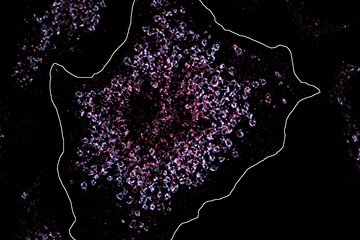FLASH 2 enables MRI images of children without anesthesia
New MRI procedure offers immense advantages in pediatric radiology
A revolutionary new method of magnetic resonance imaging (MRI) called FLASH 2 is being used at the Institute for Pediatric Radiology at the University Hospital Leipzig, which offers immense advantages for the radiological examination of children. With FLASH 2, which was developed at the Max Planck Institute for Biophysical Chemistry (today Max Planck Institute for Multidisciplinary Natural Sciences), MRI imaging becomes even faster and more efficient. The procedure, which makes processes in the body visible even in movement, makes it possible for the first time to examine small children without sedation and anesthesia, which is a sensation in pediatric radiology.

In the 1980s, Jens Frahm and his team at the Max Planck Institute in Göttingen set themselves the goal of making MRI technology faster and had a revolutionary idea: they only used part of the available MRI signal for each individual measurement, instead of using the entire signal. With this innovative physical trick, they were able to radically shorten the measurement times - by a factor of at least 100. With the newly developed FLASH method, it was now possible to create high-resolution three-dimensional MRI images of the inside of a patient within a few minutes. The FLASH technique quickly attracted the interest of leading MRI equipment manufacturers and has been used worldwide ever since.
Despite the breakthrough improvements that FLASH brought, real-time monitoring of dynamic processes was not possible. The multitude of measurement data required for the reconstruction of images with high spatial resolution and sufficient signal-to-noise ratio still led to measurement times in the range of seconds. This posed a major challenge, especially when examining small children, as the child's movement could severely impair image quality. It was clear that further development was needed to overcome this obstacle and realize the full potential of MRI in medical diagnostics. This is where FLASH 2 comes in and offers a solution to these challenges.
FLASH 2 enables recordings in milliseconds
In 2010, the scientists achieved the breakthrough. Through the development of novel coding strategies and mathematical approaches for image reconstruction of heavily undersampled data sets, the measurement times for serial images could be reduced to only around 10 to 50 milliseconds. This corresponds to a speed of 20 to 100 frames per second. With FLASH 2, MRI films, e.g. of a beating heart, can be generated in real time. This opens up a multitude of previously impossible applications in science and medicine. “Not only are we certain that we have found the right physical and mathematical solution to the problem, we have also succeeded in developing a simple technical solution for practical implementation. In this way, an existing MRI device can be quickly and safely retrofitted with a suitable computer and the various measurement protocols. So nothing stands in the way of a broad clinical-radiological implementation,” explains Jens Frahm.
FLASH 2 is used successfully for research purposes in the pediatric radiology department of the Leipzig University Hospital. Contributions to teaching and research are an important part of the institute's work and real-time MRI imaging is one of the main research areas. "Children, and especially small children, are particularly sensitive to radiation. Magnetic resonance imaging is therefore an extremely important examination technique for children. However, the duration of conventional MRI images often requires sedation or anesthesia, which in turn entailed risks and inconveniences for the young patients. The FLASH 2 technique allows us for the first time to create MRI images of small children without these measures. This represents a sensational innovation and solves a fundamental clinical problem: the resistance to movement of the FLASH 2 technology has the potential to transform the future of pediatric MRI," says Franz Wolfgang Hirsch, Director of the Institute for Pediatric Radiology, on real-time MRI imaging.
Research Use License
Max Planck Innovation (MI), the technology transfer organization of the Max Planck Society, licenses the FLASH 2 process and enables its use in research institutions and clinics. These facilities receive special pulse sequences to control an existing MRI device and software for data analysis. The results are displayed and archived on the MRI machine like all other images using a graphics card computer. The operation of the measurement logs does not require any special knowledge. Numerous other renowned institutions such as the University Medical Center Göttingen, the Radcliffe Hospital at the University of Oxford or the Johns Hopkins University in Baltimore are already using the FLASH 2 method successfully. "FLASH 2 has the potential to significantly improve medical diagnostics. By applying this innovative technology, research will be advanced and new insights will be gained. We are excited that FLASH 2 is already being used in research by leading research institutes and clinics worldwide and look forward to further developments and applications in the future," emphasizes Bernd Ctortecka, Patent and Licensing Manager at MI, the benefits of FLASH 2 for research.
With the use of FLASH 2 in pediatric radiology, a milestone is reached that will revolutionize MRI imaging for young children. Fast and motion-resistant imaging opens up new possibilities for the diagnosis and treatment of young patients. Due to the ongoing research and development of FLASH 2, even more applications and findings in a wide variety of research fields are expected in the future, which will further improve medical care and benefit patients.












